Home > Article > Backend Development > Python commonly used standard libraries and third-party libraries 2-sys module
The os module introduced earlier is mainly for the operating system, while the sys module in this article is mainly for the Python interpreter.
The sys module is a module that comes with Python. It is an interface for interacting with the Python interpreter. The sys module provides many functions and variables to deal with different parts of the Python runtime environment.
You can check which methods are included in the sys module through the dir() method:
import sys print(dir(sys))
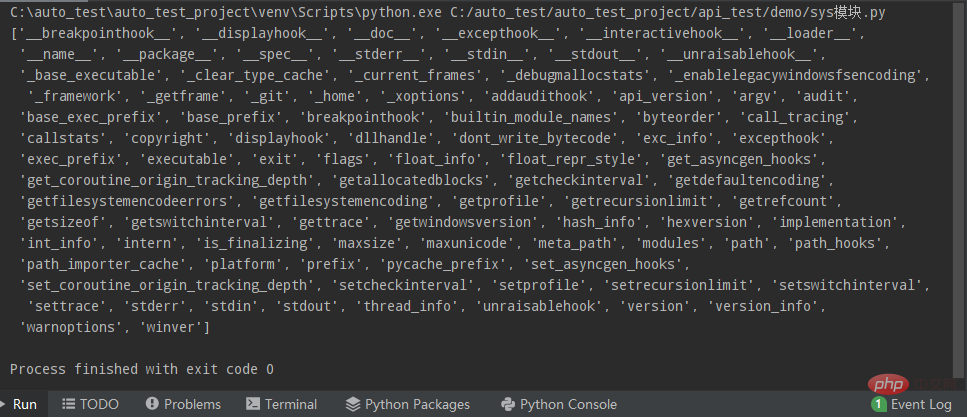
sys.argv is used to transfer parameters from outside the program to the program, and it can obtain the command line parameter list. The argv list contains all parameters passed to the script:
import sys for index, arg in enumerate(sys.argv): print(index, arg)
Execute this script file on the Python command line (without any parameters), and obtain the second parameter One element is the script itself. The print result is:
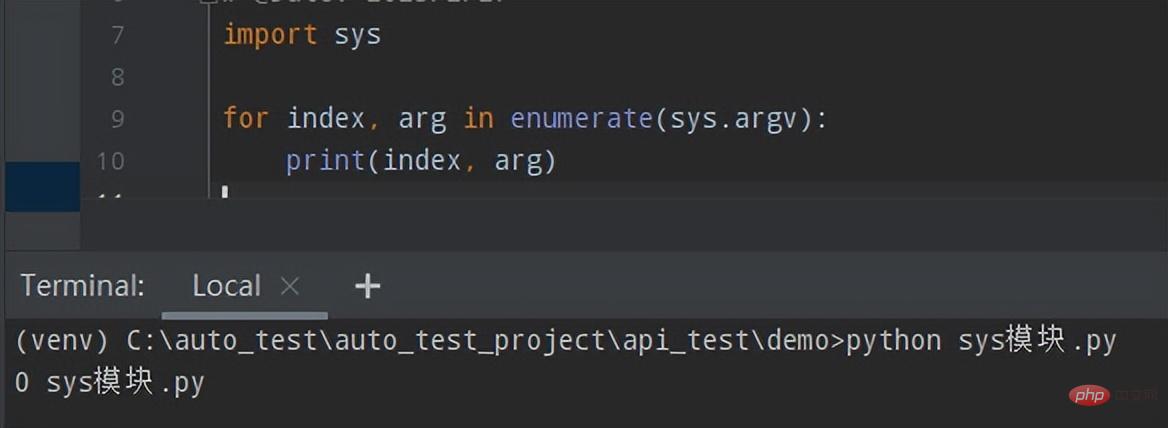
Execute this script file (with parameters) on the Python command line, and the first element obtained is the script itself. The rest are passed parameters. The printing result is:
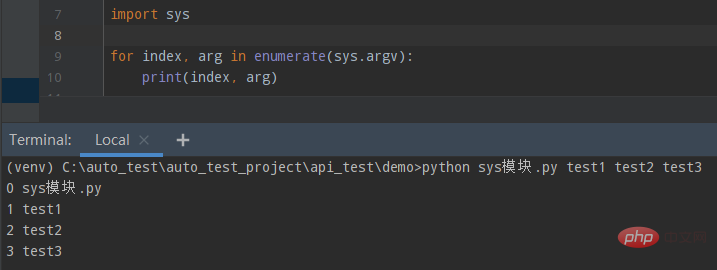
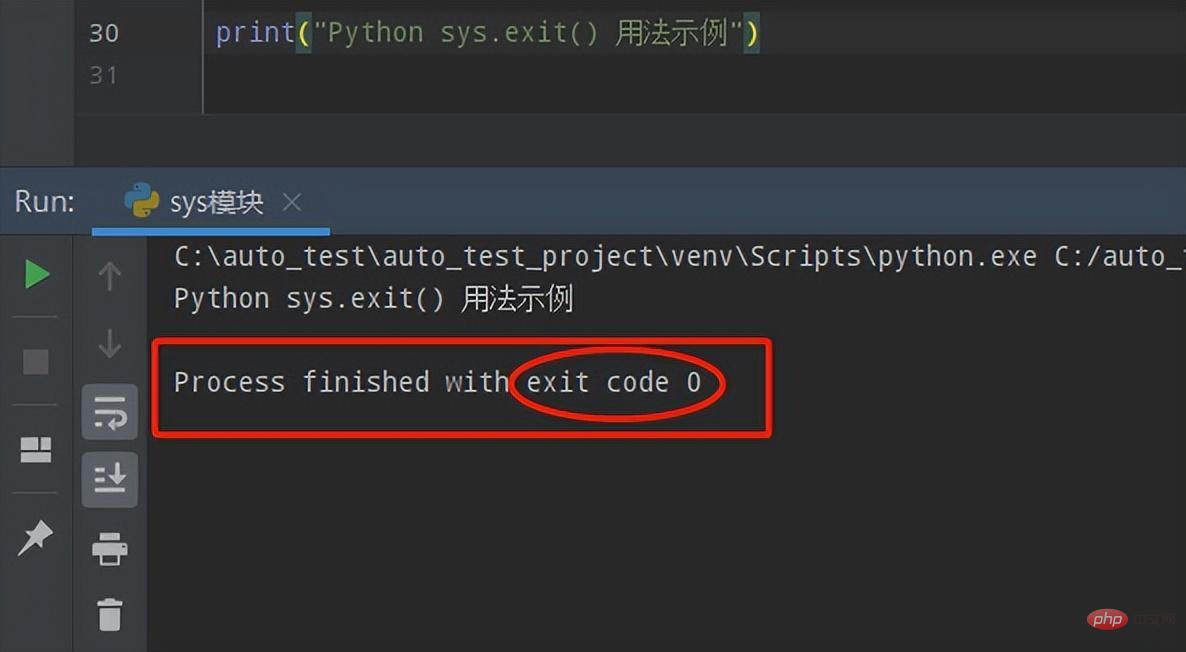
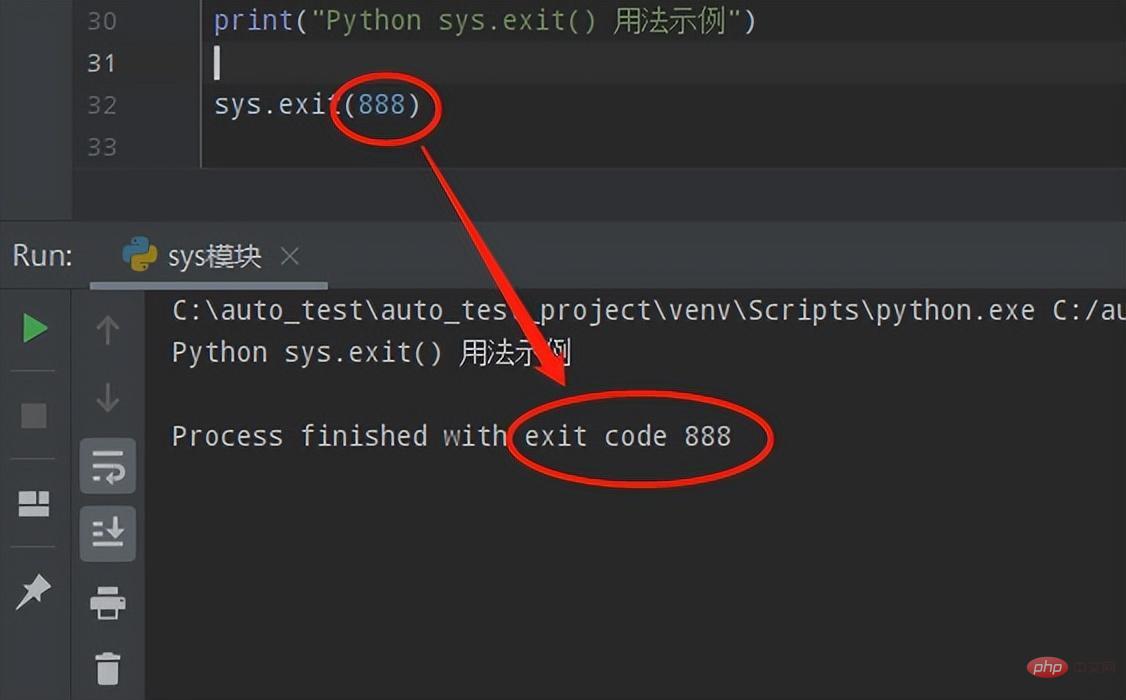
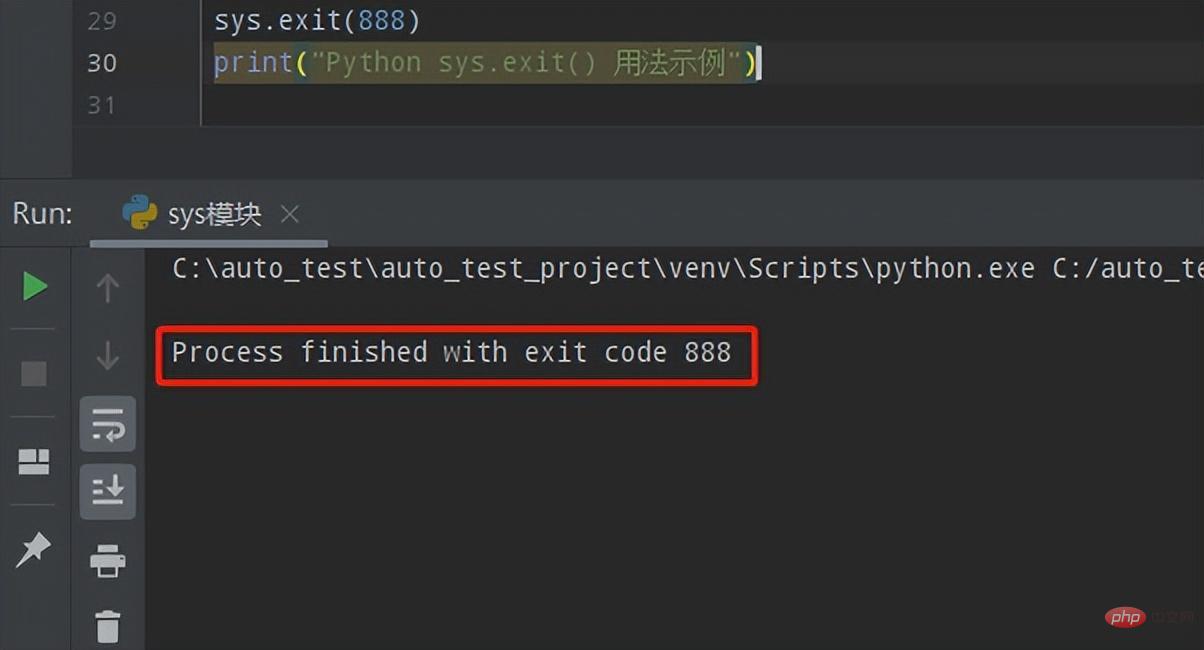
# sys.exit()用法示例
def exit_function(value):
print("sys.exit()捕获到的value是%s" % value)
sys.exit(0)
print("start sys")
try:
sys.exit(888)
except SystemExit as value:
exit_function(value=value)
print("end sys")① Example of program exiting midwayThe execution results are as follows:
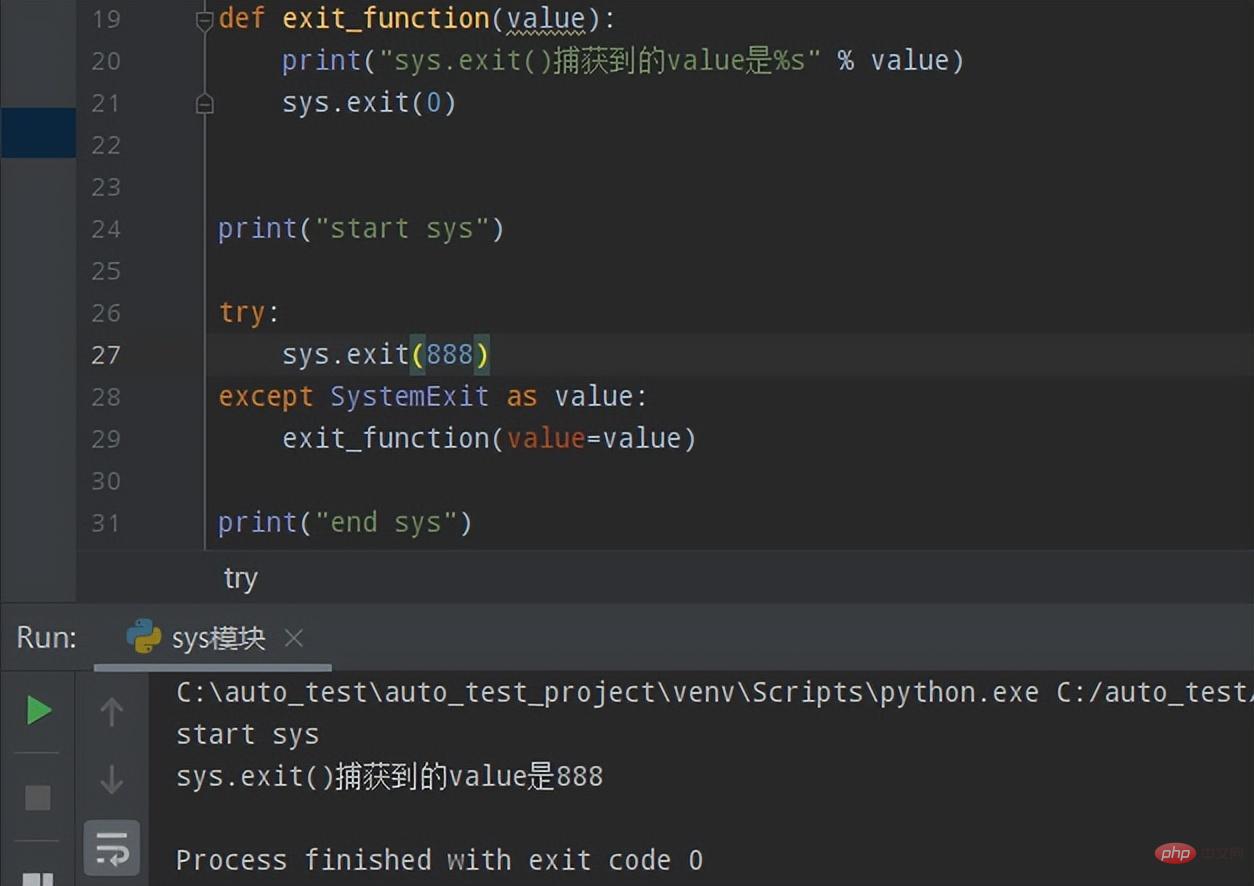
上个示例的执行结果可以看到在exit_function函数中调用sys.exit(0),此时程序就会退出,不会再执行print("end sys"),而当在exit_function函数中注释掉sys.exit(0),则会继续执行最后的代码print("end sys"),即:程序中途不退出,如下所示:
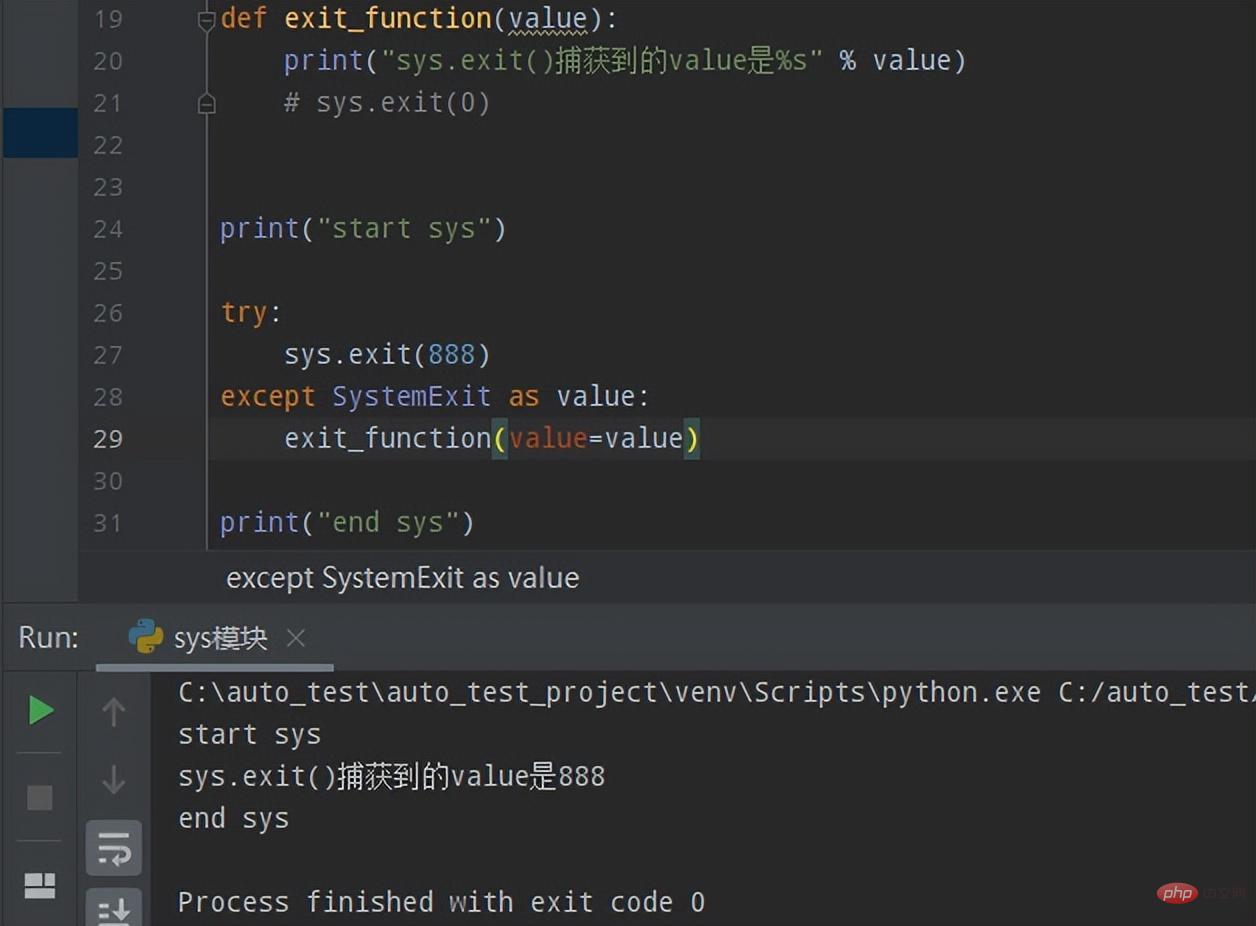
print(sys.platform)
Windows下运行:
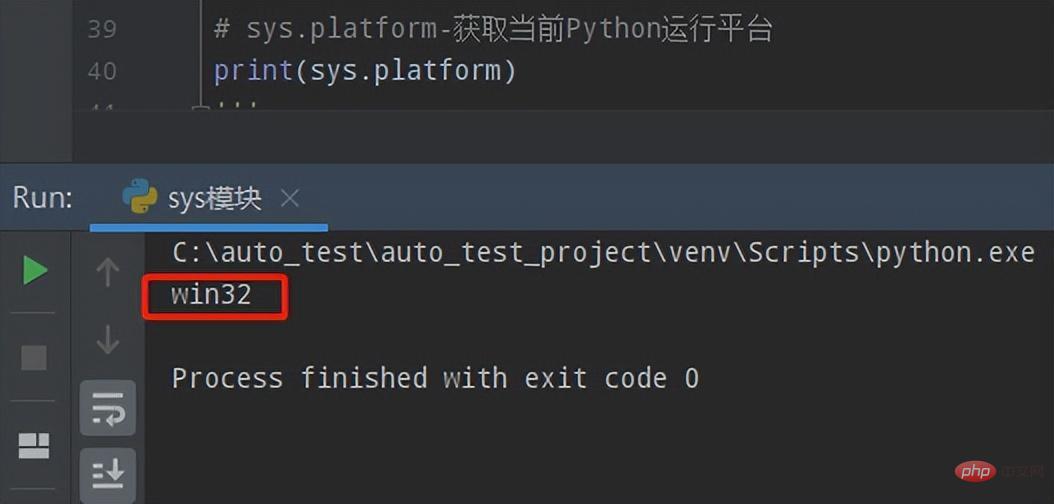
Linux下运行:

除了sys.platform外,通过platform.system()也可以获取到当前系统平台:
Windows下运行:
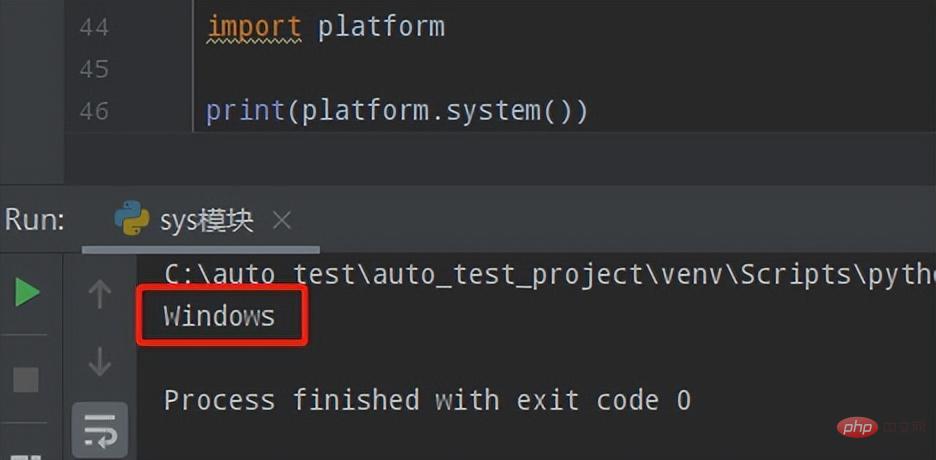
Linux下运行:

我们都知道Python是跨平台语言,只要操作系统安装了Python环境,那么同一份Python代码就可以既运行在Linux上,也可以运行在Windows上,亦或是Mac上。
而使用sys.platform或platform.system()获取到当前系统平台名称后,我们就可以针对性地作出不同操作,例如:
linux_content = "111111" windows_content = "222222" # 平台为Linux,执行逻辑1、发送文本1到指定邮件 if platform.system() == "Linux": send_email(linux_content) # 平台为Windows,执行逻辑2、发送文本2到指定邮件 elif platform.system() == "Windows": send_email(windows_content)
sys.path是Python的搜索模块的路径集,供Python从中查找模块,返回一个list。
print(sys.path)
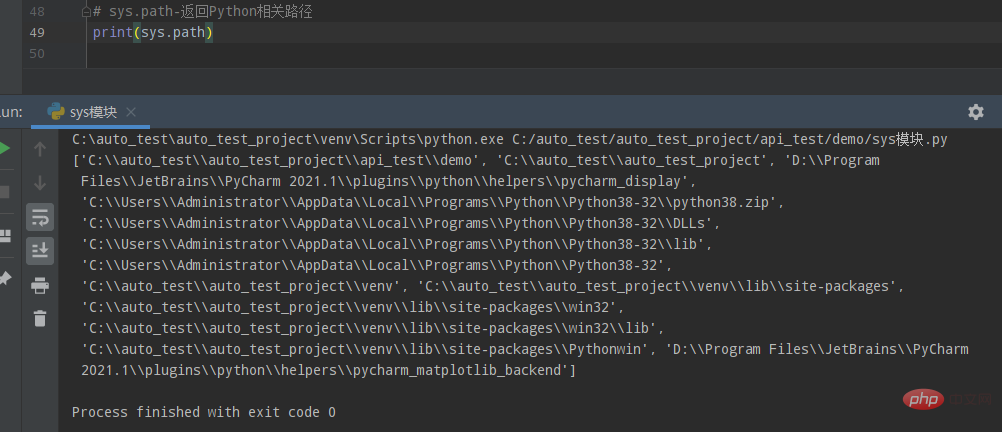
如果是在IDE中执行Python程序,编译器会自动把当前项目的根目录加入到包查找路径中,可以理解为添加到环境变量下,所以直接执行是没有问题的。但是在cmd或是Terminal控制台中直接使用Python相关命令来执行程序,则不会自动将当前项目加入到PYTHONPATH环境变量下,如果涉及到import其他文件夹下的变量就会报类似"ModuleNotFoundError: No module named 'xxxx'"这样的错误。
解决方法:通过sys.path.append()方法将当前项目的根目录添加到系统环境变量中:
import sys root_path = os.path.dirname(os.path.realpath(__file__)) sys.path.append(root_path)
在Python中, input() 等价于 sys.stdin.readline()
① 先来看看使用input()的实现效果
# sys.stdin 与 input
number = input("please input a number:")
print("your input number is %s" % (number))执行效果如下:
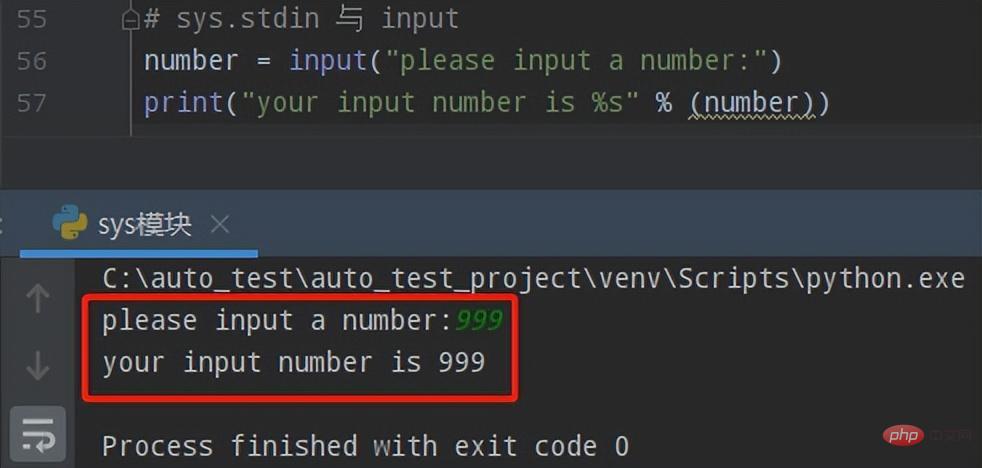
② 再来看看使用sys.stdin.readline()的实现效果
print("please input a number:",)# 逗号表示不换行
nn = sys.stdin.readline()
print("your input number is %s" % (nn))执行效果如下:
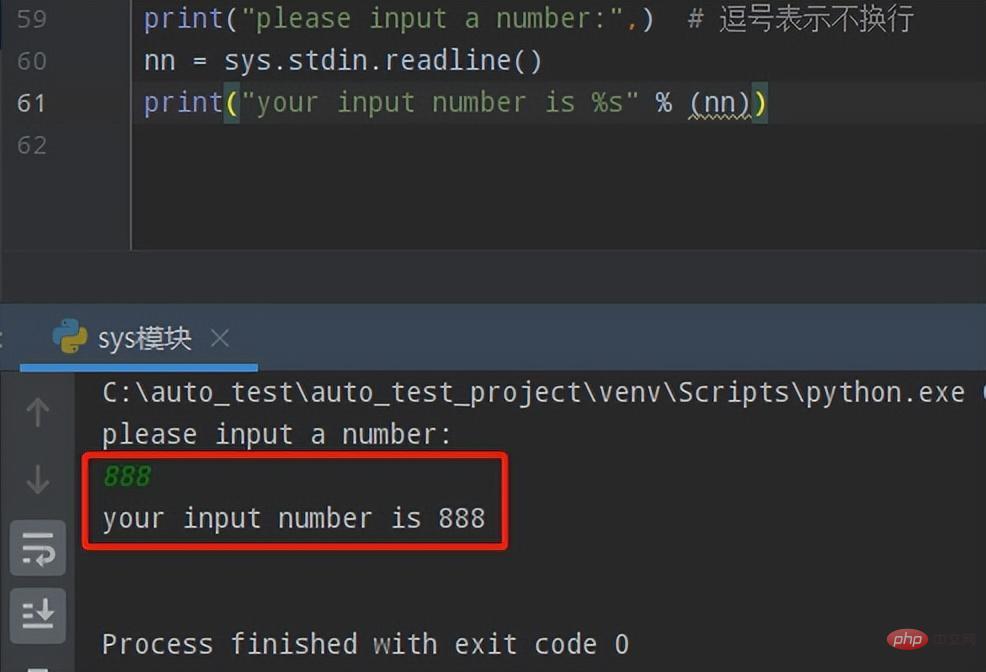
在Python中, print() 等价于 sys.stdout.readline()
① 先来看看使用print()的实现效果
# sys.stdout 与 print
print("hello world")执行效果如下:
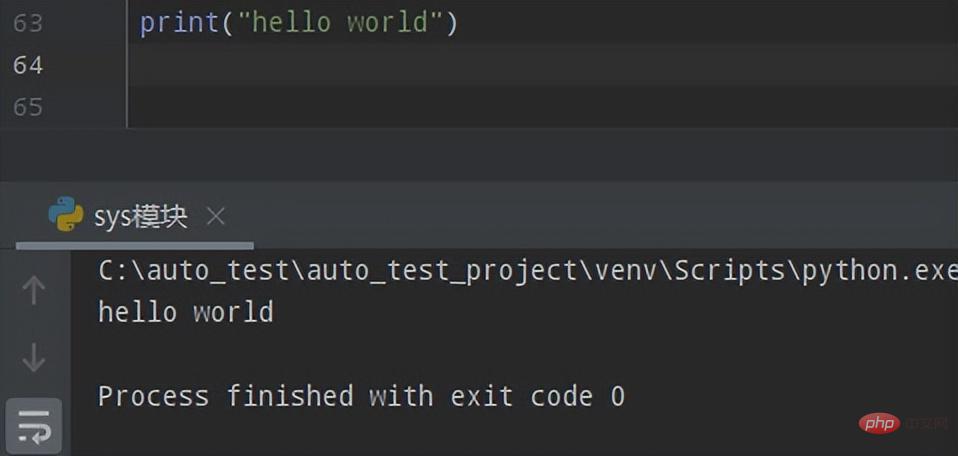
② 再来看看使用sys.stdin.write()的实现效果
sys.stdout.write("hello world")执行效果如下:
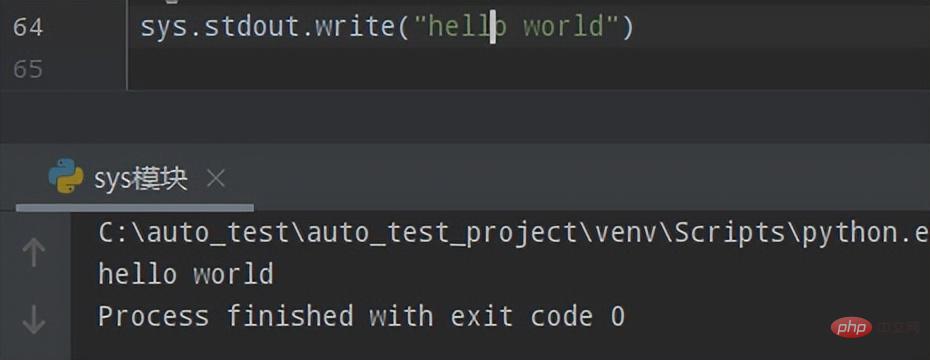
所以综上所述,input()+print() 结合的代码语句即可使用sys.stdin.readline()+sys.stdin.write()代替,如下:
sys.stdout.write("please input a number: n")
number = sys.stdin.readline()
sys.stdout.write("your input number is %s" % number)执行效果如下:
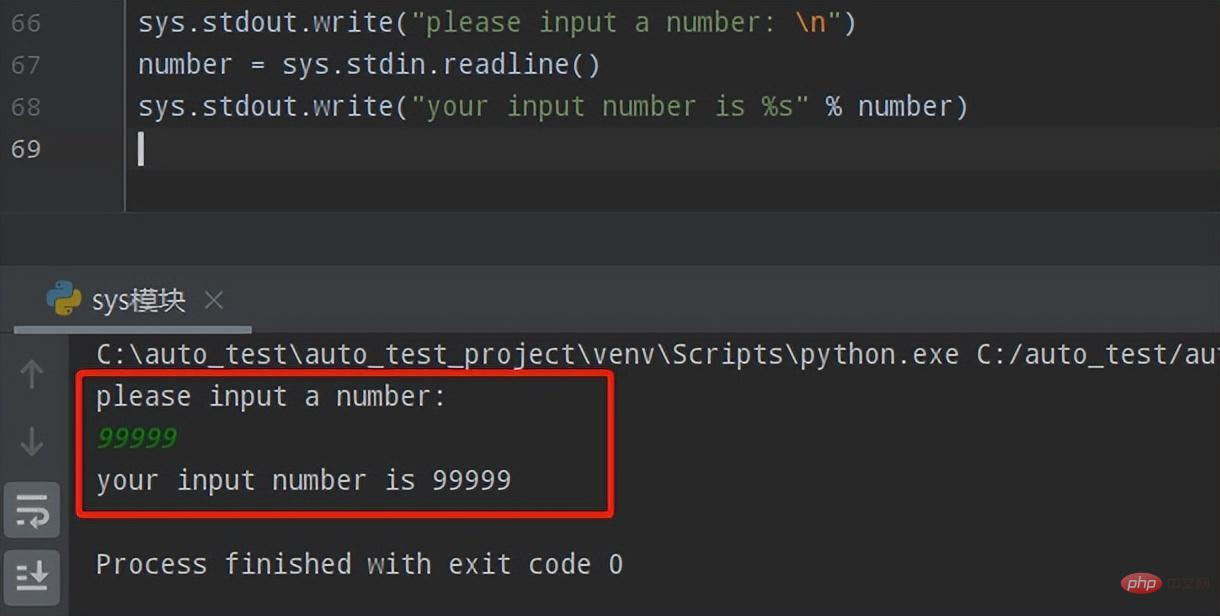
The sys module is a module that comes with Python , mainly used for interacting with the Python interpreter. It comes with many methods or attributes, among which:
1.sys.argv is used to transfer parameters from outside the program to the program, and it can obtain the command line parameter list. The argv list contains all parameters passed to the script:
2.sys.exit(n) is used to exit the program:
sys.exit(n) often captures SystemExit Used together with exceptions to control whether the program exits midway freely;
3.sys.platform is used to obtain the current Python running platform, similar to platform.system(), and is often used to target different operating systems. Make different operation logic;
4.sys.path is the path set of Python’s search module. Add the root directory of the current project to the system environment variable through the sys.path.append() method. You can use To solve the error report that the module cannot be found;
5. In Python, input() is equivalent to sys.stdin.readline(), and print() is equivalent to sys.stdout.readline().
The above is the detailed content of Python commonly used standard libraries and third-party libraries 2-sys module. For more information, please follow other related articles on the PHP Chinese website!